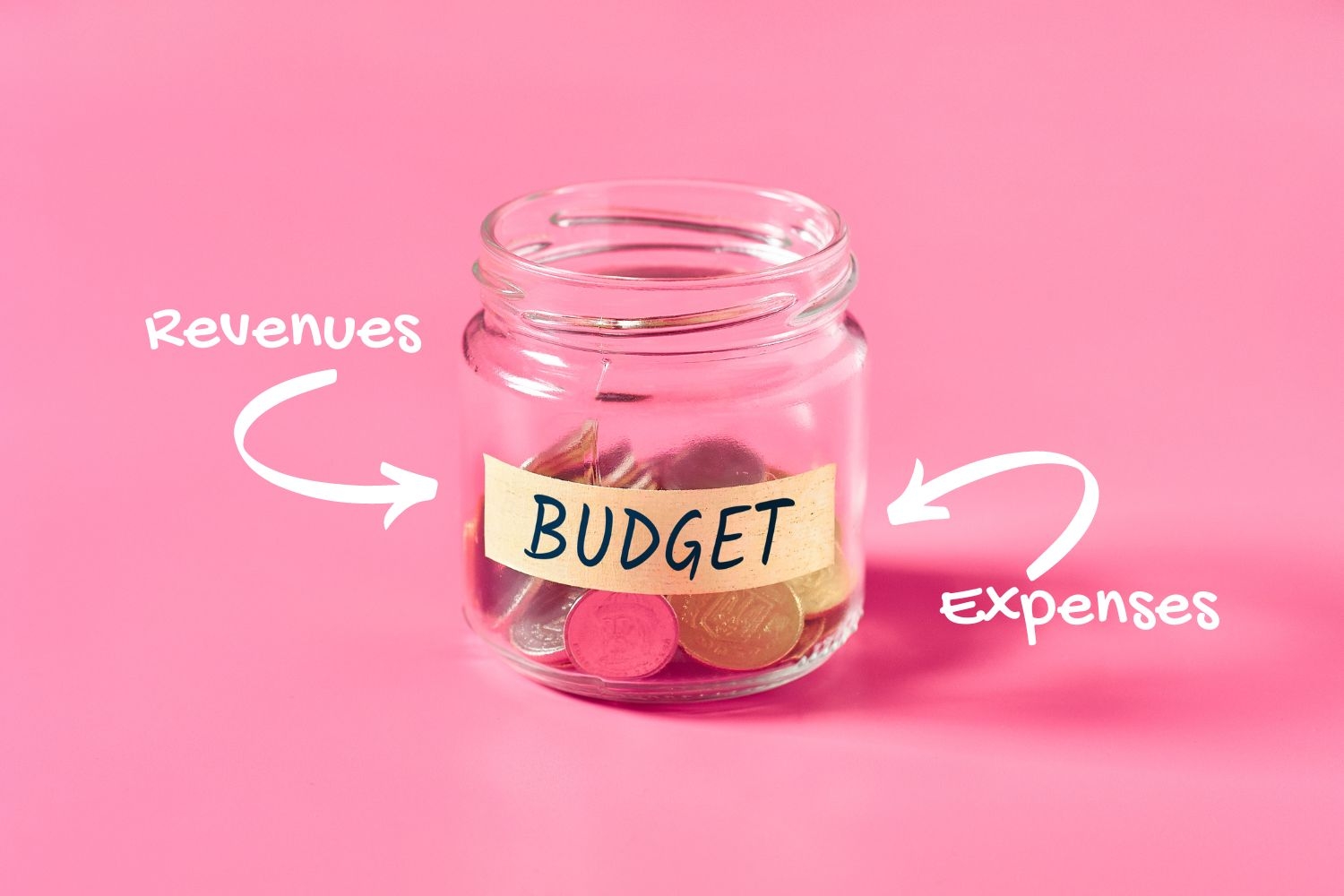Non-Profit Budget Basics

A non-profit budget is a partner to the operational plan. Together they provide the road map for what the organization aims to work on for its operating year. It sounds so simple, but when it comes time to sit down at the computer to create a new budget, that blank spread sheet can make the task feel almost impossible.
Where do you start? How do you factor in the previous year’s actual costs? How do you record grant funding that isn’t confirmed? There are so many questions and for smaller non-profits, it can be difficult to find answers.
Use these 6 steps to create a budget.
Breaking down an annual operating budget into a collection of smaller program budgets is a great place to start. Here are 6 steps to get started creating an annual operating budget.
STEP #1 – BROAD CATEGORIES
Begin by listing all the broad categories for revenues and expenses, using only the ones that are applicable to your specific organization.
For revenue, these broad categories might include:
- Grants (core grants, municipal, provincial, etc.)
- Donations and Gifts (donations, gifts)
- Sponsorships (corporate cash sponsorships)
- Self-Generated (membership fees, merchandise sales, event revenue)
For expenses, these broad categories might include:
- Programs/services (workshops, training, outreach, events)
- Partnership programs/services (these can be included in with major programs, or separated out, if more tracking is desired)
- Marketing (website, newsletters, print materials, give-aways)
- Governance (board meetings, strategic planning)
- Staffing (wages, benefits, hiring, training, staff meetings)
- Administration (office supplies, office equipment, rent, phones, professional services)
One of the best ways to keep a non-profit budget clear and usable is to format it to mirror the order of the operational plan. It might take a bit of back and forth tweaking to get them to align nicely, but once they do, it is so much easier to use.
STEP #2 – SUB-CATEGORIES
Go through the operational plan and for every program/service, add a line under the corresponding revenue broad category and the expense broad category.
STEP #3 – PROGRAM BUDGETS
If detailed budget work (such as calculating HR costs or complex program costs) is needed, do that on a separate spreadsheet tab, then transfer over the totals to the sub-categories. Don’t clog up the main budget with detailed program budgets.
If you have advanced spreadsheet skills, program budgets can be set-up to automatically insert the totals into the sub-categories. That provides a lot of flexibility to tinker with program budgets separately, and the totals will automatically adjust.
STEP #4 – GRANT and SPONSORSHIP FUNDING
Grant and sponsorship funding that isn’t confirmed shouldn’t be included in the master budget, or it needs to be recorded as a $0 line item. There is nothing certain about most grant or sponsor funding. It is far better to add it in later, than to have added it too early and need to scramble to make ends meet because the funding application was declined.
STEP #5 – WHERE DO THE NUMBERS COME FROM
With the categories and sub-categories in place, it is time to start adding in the numbers. Budget numbers come from 3 sources.
- Knowing what the programs/services cost in the previous year(s).
- Using common sense knowledge of what something costs.
- Variances that need to be recognized, such as rent increases, wage increases, funding cuts, etc.
STEP #5 – SURPLUS/DEFICIT
It is very different from one non-profit to another if major funders will allow for an organization to have a surplus master budget. Funders rarely want to see their money go towards padding the bottom line of another organization, they usually want to see all funding spent on programs/services. There is a similar feeling from donors and sponsors who want to see every penny used.
That doesn’t mean a non-profit can’t decide to have a surplus from their self-generated funding such as merchandise sales or fees. Even if the surplus will be used towards worthwhile expenses such as long-term purchases, or having a savings for the leaner years, planning a master budget surplus needs to be handled very carefully, with full understanding of how it will be interpreted by funders.
STEP #6 – 2-3 COLUMNS
A master budget will usually have at least 2, but sometimes 3, columns. The first column is the finished master budget numbers. The last column is the actual amounts earned or spent, as they flow in/out during the operating year.
Depending on the organization’s policy for making changes to the master budget, there may be room to add a middle column. A middle column is basically a second master budget, but one that fluctuates throughout the year. Being able to see both the initial planned budget that never changes, and the fluctuating budget, helps to monitor shifts in revenues and expenses during the year, while also providing a needed reference for future budgets.
Benefit from a plan that can be re-used each year.
When an operational budget aligns with the operational plan, both documents are much easier to use. Time isn’t wasted hunting for where a program fits on either document.
When an operational budget and operational plan are in alignment, they become the road map for the operational year. Having a road map is critical for a non-profit to monitor that they are doing what they planned to do, taking advantage of opportunities that fit within strategic priorities, and quickly correcting errors when going off course.
When the creation of an annual operational budget follows a template that can be re-used year after year, questions are much easier to answer and budget numbers much more accurate.
Start with small steps towards the bigger goal.
Tackling a new format for an operational budget, especially if it doesn’t align with the operational plan, can feel like a lot of work. To make that easier, here are 3 steps to take to get started towards that goal.
- Create a budget that uses broad categories and sub-categories, moving all individual program budget calculations to reference pages.
- Don’t budget for grant or sponsorship funding until it has been confirmed in writing.
- Choose a budget format that mirrors the operational plan format.
Non-profit operational budgets don’t need to be overwhelming or intimidating.
When a non-profit wants to make its operational budget easier to design, a simple, re-usable template, will make the budget much easier to manage.
Thanks for taking the time to read my ideas. If you know someone who needs to read this, why not grab the link, and share it with them. Let’s work together to make non-profit budgets a zero-stress activity.
-Christie
…
Hi, I'm Christie Saas, former board member, current Executive Director, and non-profit volunteer. I remember well, those early years when I lacked the training, the confidence, and the work-life balance to focus on becoming the best non-profit leader I could be.
Fast-forward past many bumps in the road, lessons learned, and you’ll find me still in the trenches, but a little wiser, a little calmer, and a whole lot happier. I love my work and I want to help you love yours too.
I created ChristieSaas.com so non-profit leaders never need to feel alone. I’m here to help. If you’re a brand-new non-profit leader, or a little more seasoned, someone who’s looking to make a meaningful contribution and still have time for a full life away from the job, you’re in the right place.
© Christie Saas 2022 All Rights Reserved
…
Want to learn more?
Start with one of my free resources.


